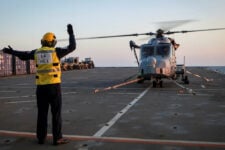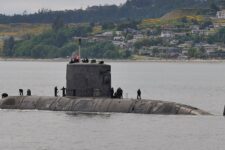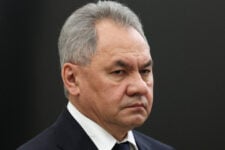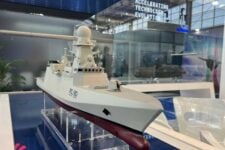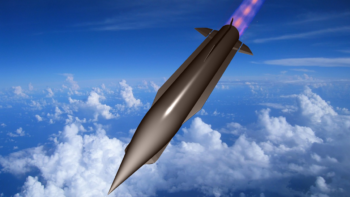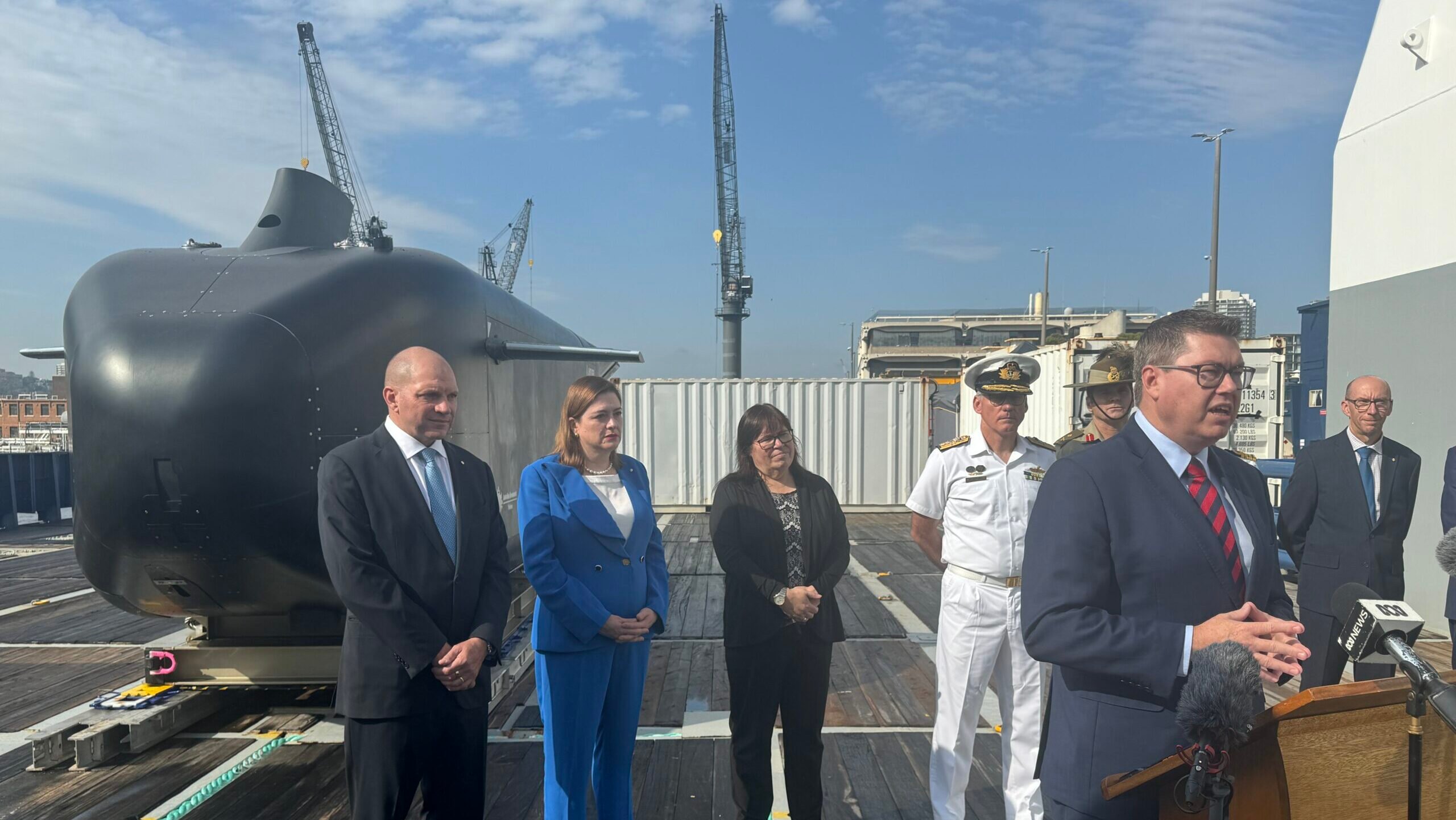
Pat Conroy, Australian minister for defense industry, flanked by the Anduril drone sub and Australian industry and officials. (Colin Clark / Breaking Defense)
GARDEN ISLAND — In a bright spot for Australian defense procurement, an important domestic defense program, the first Ghost Shark autonomous submarine prototype, has come in early and on budget.
“The first prototype was delivered one year early and on budget, and all three will be delivered by June 2025. So, from conception to full realization, less than three years,” an upbeat Pat Conroy, minister for defense industry, told reporters here in Sydney’s main naval base. Clearly demonstrating the government’s confidence in the program’s progress, Conroy said it will move directly from prototype to production.
The Ghost Shark, he said, is part of defense’s coming $5.2 to $7.2 billion investment in undersea uncrewed maritime systems. Of course, the program will have to continue meeting the Defense Department’s key parameters as it proceeds, but for now the sub system “is not just meeting them, it’s surpassing them,” Conroy said.
Anduril Australia, which has said it hopes to make hundreds of the “extra-large” underwater autonomous subs for export, produced the vessel near Sydney. It’s not only an ISR platform, Conroy said. The boxy black boat also “has the ability to be fitted with weapons to deter potential aggressors,” he said.
Chief of the Navy Vice Admiral Mark Hammond said, “We are a nation girt by sea, and the Ghost Shark is one of the tools we are developing for the Navy to patrol and protect our oceans and our connection to the world.”
The boat is the first weapon being developed by the new Advanced Strategic Capabilities Accelerator (ASCA), created in early July last year, Conroy said.
“So these projects started in mid-2020 to first prototype in mid-’24. And we will have the first production variant by the end of 2025,” he told a small group of reporters. “So we’ll go from an idea to production variants of this in three and a half years, demonstrating the new speed that the Albanese Labor Government is injecting into the force.”
The Labor Party government is investing $748 million in ASCA over the next four years, and $3.4 billion over the next decade — $591 million above planned spending on defense innovation.
In the last few years, many of Australia’s major weapon systems have been bought from other countries, especially from the United States through its Foreign Military Sales program. And American, Korean or German primes have dominated most of those programs.
In this case, Anduril Australia, an “independent entity” spun off from its US parent, put up $70 million of its own money, which the government matched. Few small or medium enterprises (SME), of course, can muster that kind of cash. And the ASCA makes a point of stressing it wants to work with SMEs, so Breaking Defense asked Conroy if he thought industry would come up with the same kind of co-payment that Anduril did.
Australia’s chief scientist head, head of the Defense Science and Technology Group, with which ASCA is affiliated, said the government would cover those costs for SMEs.
“Of course, when we’re working with small to medium enterprises, we need to cover costs because it’s not always possible for companies to co-invest,” Tanya Monro said at the press event. She said the government would prefer co-investment “because as the minister said, skin in the game means we together share objectives, and it’s in industry’s interest to accelerate. So we have a mixed and flexible model. What matters most is accelerating capability into the hands of the warfighter.”
The Ghost Shark milestone comes amid reports of growing dissatisfaction with the government’s defense plans among members of the Australian Defense Force, with a key outside criticism being that Australia will be unlikely to shore up deficiencies in the next three to five years. At the event, Conroy attempted to hold up Ghost Shark’s acquisition speed as just the opposite.
“We are moving at great speed with Ghost Shark behind me as an example of that,” he said. “Another example is we will be manufacturing missiles in this country next year — next year — when we’ve only been in government for less than two years. We are bringing forward the landing craft so that we’ll be delivering the first one of those in 2026. We’ve brought forward the delivery of the High Mobility Artillery Rocket Systems (HIMARS) so that the first one will be in country by the end of next year.
“We’re moving at lightspeed to reequip the Australian Defence Force so that we can protect the Australian people. This is all about promoting the safety of the Australian people and we’re doing that with all due haste and with increased resources,” he said.

